Montana
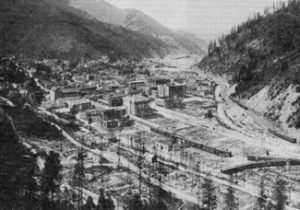
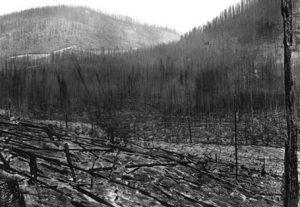 With summer, and especially late summer, when things are beginning to dry up, comes an increased danger of wildfires. Add to that, an extremely dry spring and early summer, and you have a recipe for disaster. Such was the case in northwest Washington, northern Idaho, and western Montana in 1910. There were a great number of problems that contributed to an over active fire season, and ultimately, the destruction that began on August 20, 1910, quickly became a firestorm that burned about three million acres…a full 4,700 square miles before it was over. The areas burned included parts of the Bitterroot, Cabinet, Clearwater, Coeur d’Alene, Flathead, Kaniksu, Kootenai, Lewis and Clark, Lolo, and Saint Joe National Forests. The extensive burned area was approximately the size of the state of Connecticut. The extreme scorching heat of the sudden blowup can be attributed to the great Western White Pine forests that blanketed Idaho. The hydrocarbons in the resinous sap boiled out and created a cloud of highly flammable gas that blanketed hundreds of square miles, which then spontaneously detonated dozens of times, each time sending tongues of flame thousands of feet into the sky, and creating a rolling wave of fire that destroyed anything and everything in its path.
With summer, and especially late summer, when things are beginning to dry up, comes an increased danger of wildfires. Add to that, an extremely dry spring and early summer, and you have a recipe for disaster. Such was the case in northwest Washington, northern Idaho, and western Montana in 1910. There were a great number of problems that contributed to an over active fire season, and ultimately, the destruction that began on August 20, 1910, quickly became a firestorm that burned about three million acres…a full 4,700 square miles before it was over. The areas burned included parts of the Bitterroot, Cabinet, Clearwater, Coeur d’Alene, Flathead, Kaniksu, Kootenai, Lewis and Clark, Lolo, and Saint Joe National Forests. The extensive burned area was approximately the size of the state of Connecticut. The extreme scorching heat of the sudden blowup can be attributed to the great Western White Pine forests that blanketed Idaho. The hydrocarbons in the resinous sap boiled out and created a cloud of highly flammable gas that blanketed hundreds of square miles, which then spontaneously detonated dozens of times, each time sending tongues of flame thousands of feet into the sky, and creating a rolling wave of fire that destroyed anything and everything in its path.
That summer had been described as “like no others.” The drought resulted in forests that were filled with dry fuel, which had previously grown up on abundant autumn and winter moisture. Fires were set by hot cinders flung from locomotives, sparks, lightning, and backfiring crews, and by mid-August, there were 1,000 to 3,000 fires burning in Idaho, Montana, Washington, and British Columbia. Then on August 20th, everything blew up into a firestorm. The firestorm burned over two days, August 20 and 21. It killed 87 people, most of them firefighters. The entire 28 man “Lost Crew” was overcome by flames and perished on Setzer Creek in Idaho outside of Avery. The Great Fire of 1910 is believed to be the largest, although not the deadliest, forest fire in United States history. It was commonly referred to as the Big Blowup, the Big Burn, or the Devil’s Broom fire. Smoke from the fire could be seen as far east as Watertown, New York, and as far south as Denver, Colorado. It was reported that at night, five hundred miles out into the Pacific Ocean, ships could not navigate by the stars because the sky was cloudy with smoke.
The fire actually started as many small fires. Then, on August 20, a cold front blew in and brought hurricane-force winds. The wind whipped the hundreds of small fires into one or two blazing infernos. The larger fires were impossible to fight. They simply didn’t have the manpower, or the supplies. The United States Forest Service…then called the National Forest Service…was only five years old at the time and unprepared for the possibilities of this dry summer. Later, at the urging of President William Howard Taft, the United States Army, 25th Infantry Regiment…known as the Buffalo Soldiers, was brought in to help fight the blaze. The most famous story of survival was that of Ed Pulaski, a United States Forest Service ranger who led a large group of his men to safety in an abandoned prospect mine outside of Wallace, Idaho, just as they were about to be overtaken by the fire. Pulaski fought off the flames at the mouth of the shaft until he passed out like the other men. Around midnight, one man said that he was getting out of there. Knowing that they would have no 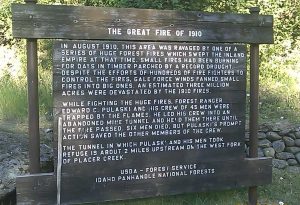
 chance of survival if they ran, Pulaski drew his pistol. He threatened to shoot the first person who tried to leave. In the end, all but five of the forty or so men survived. Several towns were completely destroyed by the fire. The fire was finally extinguished when another cold front swept in, bringing with it, steady rain. Unfortunately, it was too late for the 87 people who lost their lives in the blaze. Memorials were placed in several of the fire areas.
chance of survival if they ran, Pulaski drew his pistol. He threatened to shoot the first person who tried to leave. In the end, all but five of the forty or so men survived. Several towns were completely destroyed by the fire. The fire was finally extinguished when another cold front swept in, bringing with it, steady rain. Unfortunately, it was too late for the 87 people who lost their lives in the blaze. Memorials were placed in several of the fire areas.
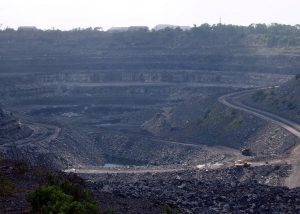
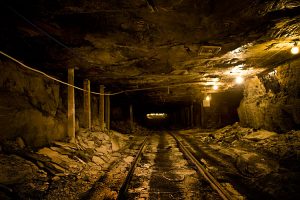 Coal mining in modern times is mostly strip mining. Scrapers systematically strip levels of earth away, and load the ore on Unit Rigs to be taken for processing. For the most part, this is a very safe way to mine coal. Mining wasn’t always that way, and in areas where underground mining is the normal mining style, accidents are bound to happen. Coal dust can be deadly. It is a fine powdered form of coal, which is created by crushing, grinding, or pulverizing the coal. Because of the brittle nature of coal, coal dust can be created during mining, transportation, or by mechanically handling coal. Grinding coal to dust before combusting it improves the speed and efficiency of burning and makes the coal easier to handle. However, coal dust is hazardous to workers if it is suspended in air outside of the controlled environment of grinding and combustion equipment. It poses the acute hazard of forming an explosive mixture in air and the chronic hazard of causing pulmonary illness in people who inhale excessive quantities of it. Coal dust in a confined space that forms an explosive mixture, can cause a mine cave in.
Coal mining in modern times is mostly strip mining. Scrapers systematically strip levels of earth away, and load the ore on Unit Rigs to be taken for processing. For the most part, this is a very safe way to mine coal. Mining wasn’t always that way, and in areas where underground mining is the normal mining style, accidents are bound to happen. Coal dust can be deadly. It is a fine powdered form of coal, which is created by crushing, grinding, or pulverizing the coal. Because of the brittle nature of coal, coal dust can be created during mining, transportation, or by mechanically handling coal. Grinding coal to dust before combusting it improves the speed and efficiency of burning and makes the coal easier to handle. However, coal dust is hazardous to workers if it is suspended in air outside of the controlled environment of grinding and combustion equipment. It poses the acute hazard of forming an explosive mixture in air and the chronic hazard of causing pulmonary illness in people who inhale excessive quantities of it. Coal dust in a confined space that forms an explosive mixture, can cause a mine cave in.
On February 27, 1943, just such a deadly combination occurred and the resulting explosion at the Montana Coal and Iron Company mine killed 74 workers. It would become the worst mining disaster in Montana’s history, and the 43rd worst in the nation. The small towns of Washoe and Bearcreek, Montana, consisted almost entirely of mine workers and their families. Most of the men worked at Smith Mine #3 for the Montana Coal and Iron Company. Saturday morning, February 27, found 77 men working in the mine. Then, at 9:30am, a huge explosion rang out. The people of Washoe and Bearcreek heard the roar and then the long, wailing siren that followed. The exact cause of the explosion is not known, though some of the company’s miners claimed methane gas had built up in some abandoned shafts and was ignited after a cave-in. The two towns are virtually ghost towns now, with Bearcreek being the only one with people living there…a total of 79 to be exact.
Inside the mine, smoke was seen pouring from the entrance…the first indication of trouble. “There’s something wrong down here, I’m getting out,” the hoist operator called up. He and two nearby miners were the last men to leave the mine alive. Rescue crews came from as far away as Butte and Cascade county, and worked around the clock in six hour shifts to clear debris and search for possible survivors. There were none. The night of March 4, workers reached the first bodies. More followed until the toll mounted to 74. Some died as the result 
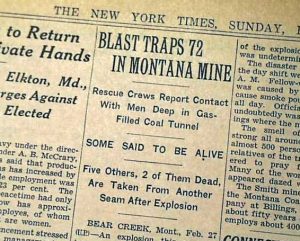 of a violent explosion in Number 3 vein, the remainder as a result of the deadly methane gasses released by the blast. Virtually every household in Washoe and Bearcreek was touched by this tragedy. All of the bodies were removed from the mine. There is a highway plaque near the mouth of the mine, which was never reopened, and there are memorials in the cemeteries in Bearcreek and nearby Red Lodge, the county seat for Carbon County.
of a violent explosion in Number 3 vein, the remainder as a result of the deadly methane gasses released by the blast. Virtually every household in Washoe and Bearcreek was touched by this tragedy. All of the bodies were removed from the mine. There is a highway plaque near the mouth of the mine, which was never reopened, and there are memorials in the cemeteries in Bearcreek and nearby Red Lodge, the county seat for Carbon County.
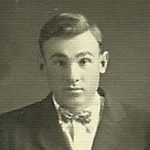 As a young boy of just 15 years, Andy Schulenberg was hunting with a friend, Howard Stewart on an October day in 1921. He leaned his rifle against a tree and it fell over, discharging and hitting Andy in the leg. That event would begin a 2 year long stay in the hospital, and Andy would lose his leg about a year into that stay, in June of 1922. While devastated over this event, Andy dug deep inside himself and decided that he would not be an invalid. Fitted with a wooden leg, that had a simple table like rubberized end to it, Andy proceeded to live the rest of his life. This would not break him, because he was not a quitter. Andy did whatever he wanted to do. Throughout his life, Andy did things his way. He became quite competitive. For a time, his family hauled beets, and Andy could out load anyone when it came to loading the truck. His arms were so strong, by way of compensation for his lack of a leg, and the fact that Andy was a big strong man. Many times while loading those trucks, he could load the truck he was working, faster than two men on the other truck…and then he went over and finished loading their truck too. Nobody could beat Andy Schulenberg!
As a young boy of just 15 years, Andy Schulenberg was hunting with a friend, Howard Stewart on an October day in 1921. He leaned his rifle against a tree and it fell over, discharging and hitting Andy in the leg. That event would begin a 2 year long stay in the hospital, and Andy would lose his leg about a year into that stay, in June of 1922. While devastated over this event, Andy dug deep inside himself and decided that he would not be an invalid. Fitted with a wooden leg, that had a simple table like rubberized end to it, Andy proceeded to live the rest of his life. This would not break him, because he was not a quitter. Andy did whatever he wanted to do. Throughout his life, Andy did things his way. He became quite competitive. For a time, his family hauled beets, and Andy could out load anyone when it came to loading the truck. His arms were so strong, by way of compensation for his lack of a leg, and the fact that Andy was a big strong man. Many times while loading those trucks, he could load the truck he was working, faster than two men on the other truck…and then he went over and finished loading their truck too. Nobody could beat Andy Schulenberg!
In 1955 Andy Schulenberg became the sheriff of Rosebud County, Montana. That was really an amazing feat for a man with a wooden peg for a leg. Andy became a sheriff who didn’t carry a gun. That is such an odd thing to think about. There might be a television show sheriff who didn’t need a gun, but the reality is that a real life sheriff carries a gun…at least any I knew of until Andy Schulenberg. You do have to recall that Andy maybe didn’t just love guns…making his decision to become a lawman a strange one, I suppose. I’m sure that most people must think that Andy lived in an area much like Mayberry on the Andy Griffith Show, but they would be wrong. Andy used different tools in his work as sheriff. He knew a lot of the Indian elders in the area, and they respected him. If Andy was looking for a specific brave, he would go to the elders and ask where he was. They would simply bring the young man to him. There are a number of young men who would be glad to tell you that had it not been for Andy Schulenberg, they would probably have ended up in prison. As I said, Andy was a different kind of sheriff. He believed in second chances, and he earned not only the respect of the elders, but of the young braves, and in fact all the young men and women in the area. He was honest and fair, and they knew they would get a fair shake from him.
There were some comical arrests, however. One in particular was the time Andy was called to Ashland, Montana. Two young Cheyenne Indians had decided to break into a liquor store. They made off with about a case of whiskey. They were down on the brush lined banks of Otter Creek when Andy caught up with them. On the reservation, Andy was known as Cottonwood, because of his wooden leg. When he found the young braves, 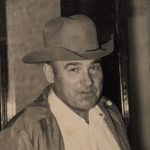 they were a little tipsy from the whiskey. They had crossed a log bridge to get to an island to have a little party. Andy cuffed the boys and told them to wait by the car. He went back for the evidence. On his way back, with several bottles of whiskey, Andy slipped and fell into the water. Under normal circumstances that might not have been a big deal, but wood floats, and Andy’s leg was made of wood. As he struggled to get his leg back under him without losing the evidence, the Indian braves sat on the side of the creek bank laughing hysterically. They assumed that the evidence would be lost, and they would get off scot-free, but they were wrong. Andy managed to get his leg under him, and save one bottle of whiskey. Then he took the braves…who had not even considered running, by the way, back to jail. And he did it all without a gun.
they were a little tipsy from the whiskey. They had crossed a log bridge to get to an island to have a little party. Andy cuffed the boys and told them to wait by the car. He went back for the evidence. On his way back, with several bottles of whiskey, Andy slipped and fell into the water. Under normal circumstances that might not have been a big deal, but wood floats, and Andy’s leg was made of wood. As he struggled to get his leg back under him without losing the evidence, the Indian braves sat on the side of the creek bank laughing hysterically. They assumed that the evidence would be lost, and they would get off scot-free, but they were wrong. Andy managed to get his leg under him, and save one bottle of whiskey. Then he took the braves…who had not even considered running, by the way, back to jail. And he did it all without a gun.
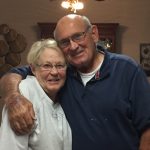 It’s like taking a trip down memory lane…going back to Forsyth, Montana. It’s the town where my husband, Bob Schulenberg’s family comes from. When our girls were little, we took them to Forsyth every summer for a visit with the family that lived there. In those days, we saw Bob’s grandma, Vina Hein, and her husband, Walt “Grandpa” Hein, and his Uncle Eddie and his wife, Pearl Hein and their family and Butch (Bernard) and his son, Scott. Then later on, we got to know Bob’s grandpa, Andrew Schulenberg, who had been the sheriff of Rosebud County for a number of years, and Bob’s Uncle Butch (Andrew) Schulenberg. After Bob’s dad, Walt Schulenberg’s passing, we talked to his brothers, Eddie, Butch, and Butch. Those were sad phone calls, but as often happens in these situations, when one door closes, another opens. Such was the case with my father-in-law’s passing. As sad as it was, it opened a door that has allowed me to get to know his brother, Butch Schulenberg, his wife, Charlys, and their family. Finding out that they are on Facebook was an added blessing, because we have become quite close. I think my father-in-law, Walt Schulenberg would be very pleased.
It’s like taking a trip down memory lane…going back to Forsyth, Montana. It’s the town where my husband, Bob Schulenberg’s family comes from. When our girls were little, we took them to Forsyth every summer for a visit with the family that lived there. In those days, we saw Bob’s grandma, Vina Hein, and her husband, Walt “Grandpa” Hein, and his Uncle Eddie and his wife, Pearl Hein and their family and Butch (Bernard) and his son, Scott. Then later on, we got to know Bob’s grandpa, Andrew Schulenberg, who had been the sheriff of Rosebud County for a number of years, and Bob’s Uncle Butch (Andrew) Schulenberg. After Bob’s dad, Walt Schulenberg’s passing, we talked to his brothers, Eddie, Butch, and Butch. Those were sad phone calls, but as often happens in these situations, when one door closes, another opens. Such was the case with my father-in-law’s passing. As sad as it was, it opened a door that has allowed me to get to know his brother, Butch Schulenberg, his wife, Charlys, and their family. Finding out that they are on Facebook was an added blessing, because we have become quite close. I think my father-in-law, Walt Schulenberg would be very pleased.
Yesterday, brought Bob and me full circle…back to Forsyth, Montana, and back in touch with the uncles and their families. As an added blessing, the uncles are friends, even though they Eddie and Butch Hein are not brothers with Butch Schulenberg. That simply hasn’t mattered. Butch and Eddie worked together at Peabody Coal, so they were friends for years. We all went out for dinner and had such a wonderful time. We talked about everything from their Peabody days, to the old days with their families. When my father-in-law, Walt Schulenberg passed away, and my mother-in-aw, Joann Schulenberg went into the nursing home, I knew that things would never be the same. That door had closed. Our lives had taken a turn in a new, and unfamiliar direction. It was not especially a direction I had ever wanted to take, but here we were, and we could not go back. Dad was gone now, and Mom’s mind is quickly slipping away.
Coming back to Forsyth was a journey into the past to a degree, and I wasn’t sure hour it would turn out,  except that I knew that I loved the people we were going to visit. It had been a number of years since we had seen them, especially Butch and Charlys Schulenberg, but when we arrived, it was like we had seen each other every day for years. While one door, the one with my father-in-law, had closed…another door, the one with his brothers had opened…or rather, re-opened. It never really was closed, but we hadn’t stepped through it, I guess. Now, I can’t imagine not spending time with the Forsyth family again. Each one is a special blessing to me. I find myself feeling so thankful to know these wonderful people. Time slips away so quickly, and I don’t ever want to take that time for granted. I don’t want to find another door closing only to find that I didn’t go through it to spend time with and really get to know the precious people there.
except that I knew that I loved the people we were going to visit. It had been a number of years since we had seen them, especially Butch and Charlys Schulenberg, but when we arrived, it was like we had seen each other every day for years. While one door, the one with my father-in-law, had closed…another door, the one with his brothers had opened…or rather, re-opened. It never really was closed, but we hadn’t stepped through it, I guess. Now, I can’t imagine not spending time with the Forsyth family again. Each one is a special blessing to me. I find myself feeling so thankful to know these wonderful people. Time slips away so quickly, and I don’t ever want to take that time for granted. I don’t want to find another door closing only to find that I didn’t go through it to spend time with and really get to know the precious people there.
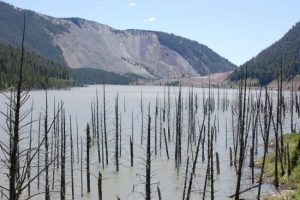 I read in the paper on Monday about the 57th anniversary of the August 17, 1959 Hebgen Earthquake that created Earthquake Lake in Montana, just west of Yellowstone National Park. The 7.5 magnitude earthquake was the second strongest quake in the lower 48 states in the 20th century, according to the United States Forest Service, killing 28 people, including five people in one Idaho Falls family who were entombed in the ensuing landslide, and are still there to this day. I was only three years old when that quake occurred, so I wouldn’t remember it, nor am I aware that it was felt in Casper, Wyoming, where we live, although it might have been felt there too. Still, I doubt I would have remembered it.
I read in the paper on Monday about the 57th anniversary of the August 17, 1959 Hebgen Earthquake that created Earthquake Lake in Montana, just west of Yellowstone National Park. The 7.5 magnitude earthquake was the second strongest quake in the lower 48 states in the 20th century, according to the United States Forest Service, killing 28 people, including five people in one Idaho Falls family who were entombed in the ensuing landslide, and are still there to this day. I was only three years old when that quake occurred, so I wouldn’t remember it, nor am I aware that it was felt in Casper, Wyoming, where we live, although it might have been felt there too. Still, I doubt I would have remembered it.
What I do remember, is the trip our family took when I was a child, that included Earthquake Lake. I don’t recall whether I was told about the 28 people who died there, or the ones they never found, but I rather doubt  it, because things like that tend to be something that sticks with me…even really bothering me when I was younger, because I almost felt like I was a trespasser on their graves. These days, I realize that being near someone’s grave, whether in a cemetery or a natural grave such as Earthquake Lake became, is still nothing more than a final resting place. What impresses me more now is the sadness of the loss. That family was on vacation, and suddenly their lives were gone…over in an instant. Along with the loss of life, there was the damage to roads, making it even harder to bring help in to the people who were trapped, although I’m not sure it would have made much difference.
it, because things like that tend to be something that sticks with me…even really bothering me when I was younger, because I almost felt like I was a trespasser on their graves. These days, I realize that being near someone’s grave, whether in a cemetery or a natural grave such as Earthquake Lake became, is still nothing more than a final resting place. What impresses me more now is the sadness of the loss. That family was on vacation, and suddenly their lives were gone…over in an instant. Along with the loss of life, there was the damage to roads, making it even harder to bring help in to the people who were trapped, although I’m not sure it would have made much difference.
I remember feeling the enormity of the catastrophic event that took place that day a number of years earlier. I was impressed by the ability of an earthquake to change the face of the landscape around it. What had been the Madison River, was blocked by a massive landslide creating Earthquake Lake. The deaths were random. A couple, Edgar and Ethel Stryker were killed by a boulder that crushed them, while their three young sons, 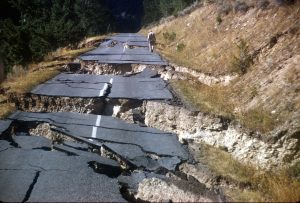 sleeping in a nearby tent, were unhurt. Irene Bennett and her son Phil were saved, but her husband Purley and their three other children were killed. Myrtle Painter died of her injuries, while her 16 year old daughter Carole survived. That was the story of the event, this one died, and that one lived. I think that while I probably didn’t know about all those deaths, that I still felt the sadness of that place, because it is a place I have never forgotten. An earthquake that happens in a rural area seems to make us think that it was simple a change of the landscape, but that is rarely the case. It seems that there are almost always a few people in the area, and that means a loss of life. A very sad event indeed.
sleeping in a nearby tent, were unhurt. Irene Bennett and her son Phil were saved, but her husband Purley and their three other children were killed. Myrtle Painter died of her injuries, while her 16 year old daughter Carole survived. That was the story of the event, this one died, and that one lived. I think that while I probably didn’t know about all those deaths, that I still felt the sadness of that place, because it is a place I have never forgotten. An earthquake that happens in a rural area seems to make us think that it was simple a change of the landscape, but that is rarely the case. It seems that there are almost always a few people in the area, and that means a loss of life. A very sad event indeed.
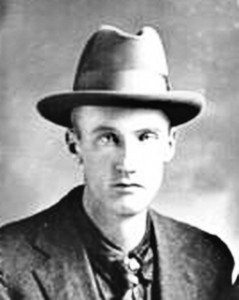 My husband, Bob’s great grandfather, Chester Leary worked for the railroad for most of his adult life. As a railroad worker, I’m sure he saw his share of close calls and accidents over the many years he worked there. Many railroad accidents make the national news, of course, but it’s possible they didn’t so often many years ago, because communication wasn’t quite as good. Nevertheless, if you lived near the train wreck, I’m sure you heard about it. I’m also sure that railroad yard accidents were a somewhat common occurrence. There is so much that goes on in a railroad yard, that sometimes things get missed, and an accident happens, but in my research for this story, I couldn’t find the accident in question here, or in fact, much information about very many railroad yard accidents at all. Maybe they just weren’t a news worthy event, unless someone was killed in the accident.
My husband, Bob’s great grandfather, Chester Leary worked for the railroad for most of his adult life. As a railroad worker, I’m sure he saw his share of close calls and accidents over the many years he worked there. Many railroad accidents make the national news, of course, but it’s possible they didn’t so often many years ago, because communication wasn’t quite as good. Nevertheless, if you lived near the train wreck, I’m sure you heard about it. I’m also sure that railroad yard accidents were a somewhat common occurrence. There is so much that goes on in a railroad yard, that sometimes things get missed, and an accident happens, but in my research for this story, I couldn’t find the accident in question here, or in fact, much information about very many railroad yard accidents at all. Maybe they just weren’t a news worthy event, unless someone was killed in the accident.
In fact, I wouldn’t have known about this train wreck at all, except that Bob’s cousin, Joe Brown sent me the picture of the wreck, with Chester Leary in the picture. The picture had the date of the accident listed on the picture, so I know that the date is correct…May 2, 1919. Nevertheless, when I looked for information on that train wreck in Forsyth, Montana in the railroad yard, I found absolutely nothing. To me that is such an odd thing. My curious mind wants to know more about how this accident happened. Was someone not paying attention to the trains coming in and out of the yard? Was anyone hurt? When did electronic tracking of the trains come into being, and would that have made a difference, since it all happened in the yard?
![Train Wreck at Forsyth, MT]pm yard May 2, 1919 Chester Leary](https://carynschulenberg.com/wp-content/uploads/2016/01/Train-Wreck-at-Forsyth-MT-yard-May-2-1919-Chester-Leary-300x198.jpg) Unfortunately, Bob’s great grandfather is no longer with us, and in fact he passed away in 1950, before either of us were born, so we couldn’t have possibly asked such a question, and wouldn’t have know to had we been born earlier. I’m sure his grandmother, Vina Hein knew what happened, because she was probably told all about it by her dad, Chester Leary. I don’t know if her dad was involved, or not, but I’m sure that would have been a story told around the dinner table that night. I really wish I could have had the opportunity to ask Bob’s great grandfather or my grandfather about all of their railroad experiences, because I have to think that it would have been very interesting to hear about it all. Especially about when things went very wrong.
Unfortunately, Bob’s great grandfather is no longer with us, and in fact he passed away in 1950, before either of us were born, so we couldn’t have possibly asked such a question, and wouldn’t have know to had we been born earlier. I’m sure his grandmother, Vina Hein knew what happened, because she was probably told all about it by her dad, Chester Leary. I don’t know if her dad was involved, or not, but I’m sure that would have been a story told around the dinner table that night. I really wish I could have had the opportunity to ask Bob’s great grandfather or my grandfather about all of their railroad experiences, because I have to think that it would have been very interesting to hear about it all. Especially about when things went very wrong.
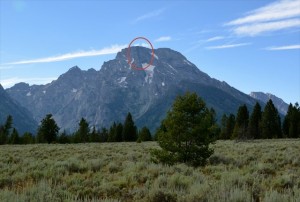 When I was about 10 years old or so, my family and my Uncle Bill’s family went to the Jackson, Wyoming area. While we were stopped at a lookout point for the Teton Mountains, my dad told a story, or maybe read the story about a plane that had crashed on Mount Moran on November 21, 1950. He told us that because of the difficulty in reaching the site, the plane and the remains of the 21 people lost in the crash were never removed from the site. My young mind could not seem to get past the fact that those bodies were still on that mountain top. I had a terrible time sleeping. I don’t know if I felt like we were somehow camping someplace we shouldn’t be, which was silly, because that site was miles from where we were camped. Nevertheless, it bothered me very much at that time. Now, many years later, I would know that the mountain was simply a burial place for the victims of a tragic crash.
When I was about 10 years old or so, my family and my Uncle Bill’s family went to the Jackson, Wyoming area. While we were stopped at a lookout point for the Teton Mountains, my dad told a story, or maybe read the story about a plane that had crashed on Mount Moran on November 21, 1950. He told us that because of the difficulty in reaching the site, the plane and the remains of the 21 people lost in the crash were never removed from the site. My young mind could not seem to get past the fact that those bodies were still on that mountain top. I had a terrible time sleeping. I don’t know if I felt like we were somehow camping someplace we shouldn’t be, which was silly, because that site was miles from where we were camped. Nevertheless, it bothered me very much at that time. Now, many years later, I would know that the mountain was simply a burial place for the victims of a tragic crash.
While I am no longer haunted by the thought of those lost ones buried in the ice at the top of the mountain, I really never lost my curiosity about the crash and just who those people were. Then, a few weeks ago, I found that today would be the 65th anniversary of that crash. It seemed like it was time to find out more about it. The plane, a new Douglas DC-3, was owned by New Tribes Mission. It was on the first leg of a trip to South America. It left Chico, California and was bound for Billings, Montana. The last radio report in was over Idaho Falls, Idaho at 3:48pm. Then it was reported overdue at Billings, leaving the sinking feeling that something tragic had happened. A resort owner said he saw a burning fuselage in the flames far above timberline on the east face of Mount Moran. When the fire subsided, he could see nothing resembling a campfire, which might have indicated survivors. Gaining access to the site was going to prove extremely difficult, and with temperatures seriously low, the chance of anyone making it through that first night were next to none. Of course, you can guess the outcome of the crash. All those on board were lost.
Removing the wreckage and the bodies of the victims proved to be a very difficult, if not impossible task, and in the end, it was decided that the wreckage and the remains would be left on the mountain. The crash site is just north of the top of the handle of Skillet Glacier. Sometimes a glint of the wreckage can be seen to this day on a sunny summer afternoon when the light is just right. The crash site remains a resting place for those lost souls, and hikers who pass the site are expected to show their respect by leaving this mountain gravesite undisturbed. The site is the burial ground for the ten men, four women, and seven children who’s remains are still entombed in the wreckage. I suppose that these days, while the plane might have been left on the mountain, the remains of the victims would have most certainly been removed allowing the families to give them a proper burial.
Hikers who have passed the wreckage have said that it has an eerie feeling. I’m sure it has to do with being so close to the remains of the victims of that horrible crash. I can totally relate to how they felt, because on that day, when we were camping just within sight of the mountain where the wreckage and the victims still remained, I could not sleep. I was not afraid of being haunted or anything silly like that, but rather I guess it felt like I was an intruder, much like the Native Americans felt when the White Man went through their burial grounds. It was just not the right place to be. I think I would feel even more like I was in the wrong place, if I ever hiked that mountain, and came upon that sight. I still have an eerie feeling about it to this day…or maybe it is just a sadness for those lost ones. I’m still not sure about that…to this day.
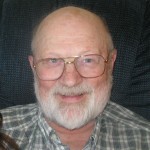
 A few days ago, a man commented on one of my stories, saying that he was Mary LuLu Taylor Leary Begier Warren’s great grandson. Joe Brown comes from her marriage to James Begier, the man she married after James Leary passed away. LuLu and James had three children, Minnie, John, and Mable. Mabel Claire married Edward Anthony Brown, and they had three children, Charles, Frank, and Mary. Frank Brown married Mary Lou Conway, and Frank Joseph (Joe) Brown is their son. Joe is my husband Bob Schulenberg’s second cousin once removed. Finding a new cousin is always exciting for me, but with the discovery of Joe, comes so much more. Joe brings with him a Gold Mine…a true Gold Mine. Joe has sent me pictures of his family, and his own drawings too. In return I have sent him pictures of our family and my in-laws family, so we are working on getting acquainted.
A few days ago, a man commented on one of my stories, saying that he was Mary LuLu Taylor Leary Begier Warren’s great grandson. Joe Brown comes from her marriage to James Begier, the man she married after James Leary passed away. LuLu and James had three children, Minnie, John, and Mable. Mabel Claire married Edward Anthony Brown, and they had three children, Charles, Frank, and Mary. Frank Brown married Mary Lou Conway, and Frank Joseph (Joe) Brown is their son. Joe is my husband Bob Schulenberg’s second cousin once removed. Finding a new cousin is always exciting for me, but with the discovery of Joe, comes so much more. Joe brings with him a Gold Mine…a true Gold Mine. Joe has sent me pictures of his family, and his own drawings too. In return I have sent him pictures of our family and my in-laws family, so we are working on getting acquainted.
Joe has been researching his family tree too, so we have a lot to talk about and a lot to share. He has access to a bunch of pictures from a part of Bob’s family that I know…some well, some only from my own research and stories from Bob’s grandmother, Vina Leary Schulenberg Hein. Joe, however, has much information, and many 
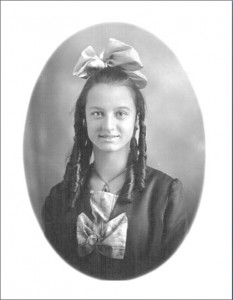 pictures…pictures of people I didn’t think I would ever have and pictures of people I know well, when they were just children. I am so overwhelmed by all this and his generosity, that it brings tears to my eyes. What a gift he has given me and the rest of the family too, as this story will serve to inform them of this amazing gift we have received. Overwhelming and amazing!! Receiving these pictures was like being given a part of our family back. I have often wondered what Bob’s grandma, Vina Leary Schulenberg Hein looked like when she was a girl. Now I know. She was a pretty girl with long ringlets. I have never seen a picture of her brother, and now I have several of them, including one with his wife, Rose Schulenberg Leary. And the only picture we had of Marion Chester Leary was the one I have used in stories in the past. My father-in-law only knew of that one. Now I have several of him too. And I have pictures of Chester’s half siblings Minnie Begier Morgan, John Begier, and Mable Claire Begier Brown. I have pictures of the history that has taken place in Forsyth, Montana, where much of Bob’s family history is centered. Of course I can’t include them all here, so they will be used in a future story. I simply could not feel more blessed.
pictures…pictures of people I didn’t think I would ever have and pictures of people I know well, when they were just children. I am so overwhelmed by all this and his generosity, that it brings tears to my eyes. What a gift he has given me and the rest of the family too, as this story will serve to inform them of this amazing gift we have received. Overwhelming and amazing!! Receiving these pictures was like being given a part of our family back. I have often wondered what Bob’s grandma, Vina Leary Schulenberg Hein looked like when she was a girl. Now I know. She was a pretty girl with long ringlets. I have never seen a picture of her brother, and now I have several of them, including one with his wife, Rose Schulenberg Leary. And the only picture we had of Marion Chester Leary was the one I have used in stories in the past. My father-in-law only knew of that one. Now I have several of him too. And I have pictures of Chester’s half siblings Minnie Begier Morgan, John Begier, and Mable Claire Begier Brown. I have pictures of the history that has taken place in Forsyth, Montana, where much of Bob’s family history is centered. Of course I can’t include them all here, so they will be used in a future story. I simply could not feel more blessed.
Joe has told me that he has much more information to share with me, and while I thought I didn’t have very much to share in return, I am finding that I have the continuing story on the Schulenberg side, at least, and he has the continuing family of his side. That is an amazing combination, and with the history that he knows, I 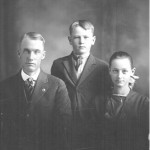
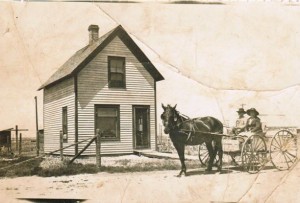 hope that I will be able to contribute some history too. Neither of us live in the area that we are talking about…Forsyth, Montana…and yet a lot of the family history took place there. What I do have is the stories told to me by my husband’s grandmother, our beloved Vina Leary Schulenberg Hein, and the stories told to me by my in-laws, Walt Schulenberg and Joann Knox Schulenberg. I am eager to share all of this history with Joe and his family, my family, and my readers. It’s going to be an incredible journey.
hope that I will be able to contribute some history too. Neither of us live in the area that we are talking about…Forsyth, Montana…and yet a lot of the family history took place there. What I do have is the stories told to me by my husband’s grandmother, our beloved Vina Leary Schulenberg Hein, and the stories told to me by my in-laws, Walt Schulenberg and Joann Knox Schulenberg. I am eager to share all of this history with Joe and his family, my family, and my readers. It’s going to be an incredible journey.
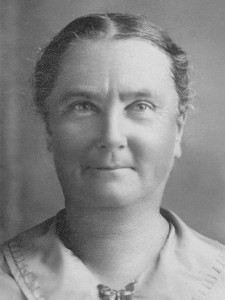 When a young woman gets married, she expects to live happily ever after. Unfortunately, for my husband, Bob Schulenberg’s second great grandmother, Mary LuLu Taylor, that was not to be. Mary, who went by LuLu, married Bob’s second great grandfather, James Leary on September 30, 1880 in Shelby, Missouri. They were very much in love. The young couple would move to Forsyth, Montana and on January 4, 1886, she gave birth to Bob’s great grandfather, Marion Chester Leary, who went by Chester for most of his life. Now their family had entered the next phase. They were no longer a couple, but rather, a family…at least for a while. The couple would move again, this time to St Louis, Missouri. March 26, 1888 would find LuLu a widow, with a two year old son to raise…alone.
When a young woman gets married, she expects to live happily ever after. Unfortunately, for my husband, Bob Schulenberg’s second great grandmother, Mary LuLu Taylor, that was not to be. Mary, who went by LuLu, married Bob’s second great grandfather, James Leary on September 30, 1880 in Shelby, Missouri. They were very much in love. The young couple would move to Forsyth, Montana and on January 4, 1886, she gave birth to Bob’s great grandfather, Marion Chester Leary, who went by Chester for most of his life. Now their family had entered the next phase. They were no longer a couple, but rather, a family…at least for a while. The couple would move again, this time to St Louis, Missouri. March 26, 1888 would find LuLu a widow, with a two year old son to raise…alone.
For a young mother in the 1880s, being a widow didn’t leave her with a lot of options. LuLu moved back to Shelby, where she met her second husband, James Begier. They 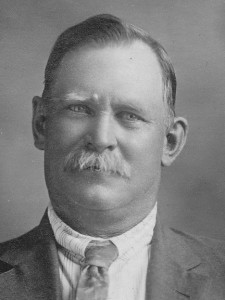 were married on March 18, 1890. LuLu thought her life had turned around, and in many ways, she was right. LuLu and James Begier went on to have Minnie in 1893, John in 1896, and Mable in 1902. I’m sure that by 1902, LuLu felt like her life was finally perfect. She had her husband and her children. Nevertheless, life would not reamin so perfect forever. This marriage would not be a happily ever after marriage either, because while James Begier’s death date is not known at this time, the last known census showing James Begier was in 1910.
were married on March 18, 1890. LuLu thought her life had turned around, and in many ways, she was right. LuLu and James Begier went on to have Minnie in 1893, John in 1896, and Mable in 1902. I’m sure that by 1902, LuLu felt like her life was finally perfect. She had her husband and her children. Nevertheless, life would not reamin so perfect forever. This marriage would not be a happily ever after marriage either, because while James Begier’s death date is not known at this time, the last known census showing James Begier was in 1910.
LuLu would remarry again on February 19, 1919 in Rosebud, Montana to Milo Warren. She had moved back to Forsyth because her eldest son, Chester Leary, was living there, with his family. When a woman is widowed, it is often the best option to move to where family lives…especially in those days. As with LuLu’s previous husbands, Milo would predecease her on August 21, 1928. Once again, LuLu moved. This time to be near her youngest daughter, Mabel Begier Brown. I don’t really know if Mabel was sick during this time or not, but LuLu passed away on April 26, 1929 in Fletcher, Oklahoma, and her daughter, Mabel Begier Brown passed away on 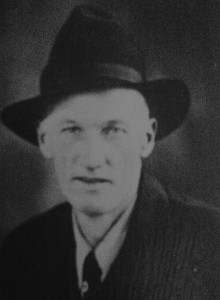 April 2, 1931 in Elgin, Oklahoma, and the young age of only 28 years.
April 2, 1931 in Elgin, Oklahoma, and the young age of only 28 years.
While, LuLu’s life was filled with times of sadness, she did nevertheless, live a full life. She had the opportunity to live in several places, and she was blessed with four children, and many grandchildren and multiple levels of great grandchildren, including my husband and his siblings, by daughters and their cousins, and my grandchildren and their cousins. While I never had the opportunity to meet LuLu in person, I have long beed intrigued by her life. My only regret is that I don’t have pictures of all her husbands…just James Begier, nor of her children…just Chester Leary. Nevertheless, I feel blessed to have those few. LuLu was born on August 31, 1861, and today is the 154th anniversary of her birth. Happy birthday in Heaven Mary LuLu Taylor Leary Begier Warren. I look forward to meeting you someday.

 Since her marriage on February 14, 2014, my niece Lindsay Moore has been a business entrepreneur at Moore Healthy Living LLC, which is her own business. She is also a part of the South Dakota State University Extension program, where she is a Grants Consultant. All this allows Lindsay to work from home and who wouldn’t want that if they could. Lindsay’s husband, Shannon Moore is the Special Teams Football Coach at Miami International University, and a part of his job includes a lot of travel. The could be hard if it weren’t for the fact that Lindsay works from home. A laptop can travel, and it is all she needs to do her work. That allows Lindsay to travel with Shannon wherever he goes. I think that is important in any marriage, but especially in a young marriage. Of course, since Lindsay and Shannon live in Miami, Florida, their lifestyle of much travel also allows them to come home to Wyoming and South Dakota periodically to see family, and I know that means a lot to their parents.
Since her marriage on February 14, 2014, my niece Lindsay Moore has been a business entrepreneur at Moore Healthy Living LLC, which is her own business. She is also a part of the South Dakota State University Extension program, where she is a Grants Consultant. All this allows Lindsay to work from home and who wouldn’t want that if they could. Lindsay’s husband, Shannon Moore is the Special Teams Football Coach at Miami International University, and a part of his job includes a lot of travel. The could be hard if it weren’t for the fact that Lindsay works from home. A laptop can travel, and it is all she needs to do her work. That allows Lindsay to travel with Shannon wherever he goes. I think that is important in any marriage, but especially in a young marriage. Of course, since Lindsay and Shannon live in Miami, Florida, their lifestyle of much travel also allows them to come home to Wyoming and South Dakota periodically to see family, and I know that means a lot to their parents.
The nice thing about being free to travel, and having the ability to do so, is that you tend to be gone for extended periods of time…at least in the off season for football. This year’s summer tour included a trip to 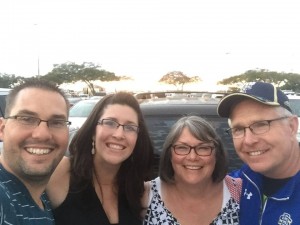 South Dakota to visit Shannon’s parents, then the whole crew continued their visit with a trip to the Black Hills, where they connected with Lindsay’s parents over the Independence Day holiday. Then, Shannon’s parents headed home, and Lindsay, Shannon and her family headed to Cooke City, Montana and other areas of the state for a week. After that, Lindsay and Shannon headed to Las Vegas for the wedding of friends, before finally heading back home by way of Arizona. In all it was quite a trip. I’m sure they were happy to be home in the end, but the trip was nice too.
South Dakota to visit Shannon’s parents, then the whole crew continued their visit with a trip to the Black Hills, where they connected with Lindsay’s parents over the Independence Day holiday. Then, Shannon’s parents headed home, and Lindsay, Shannon and her family headed to Cooke City, Montana and other areas of the state for a week. After that, Lindsay and Shannon headed to Las Vegas for the wedding of friends, before finally heading back home by way of Arizona. In all it was quite a trip. I’m sure they were happy to be home in the end, but the trip was nice too.
Lindsay and Shannon are so perfect together. They both have such great personalities, and such outgoing spirits. They have had the opportunity to live in a variety of places, and while Lindsay credits Shannon for making it easy to make their moves and settle in, I know that because Lindsay never met someone she didn’t like, making new friends wherever she goes is a breeze for her. They both love camping, which is perfect for spending time with Lindsay’s parents, and probably Shannon’s too. Lindsay loves almost any form of exercise, being an exercise science major in college, so hiking or jogging on the many trails that crisscross our country is something that I’m sure will be on the agenda for many trips they will take.

 While it would be nice to have them live closer to home, I’m sure that is not to be…at least not anytime soon. So, if we can’t have them closer to home, it is really nice that they do get lots of travel time so we get to see them, because as Lindsay always says, “I miss your face!” Yes, Lindsay and Shannon, we miss your faces too. We are thankful for Facebook so we can see your faces there from time to time. And as always, we can’t wait to see you the next time you come home. Today is Lindsay’s birthday. Happy birthday Lindsay!! Have a great day!! We love you!!
While it would be nice to have them live closer to home, I’m sure that is not to be…at least not anytime soon. So, if we can’t have them closer to home, it is really nice that they do get lots of travel time so we get to see them, because as Lindsay always says, “I miss your face!” Yes, Lindsay and Shannon, we miss your faces too. We are thankful for Facebook so we can see your faces there from time to time. And as always, we can’t wait to see you the next time you come home. Today is Lindsay’s birthday. Happy birthday Lindsay!! Have a great day!! We love you!!

